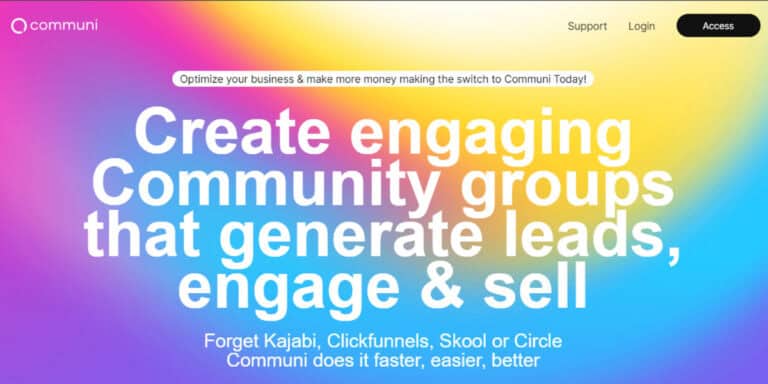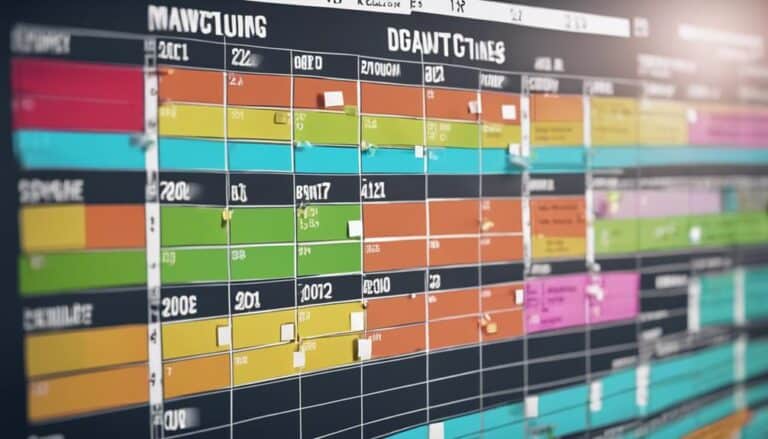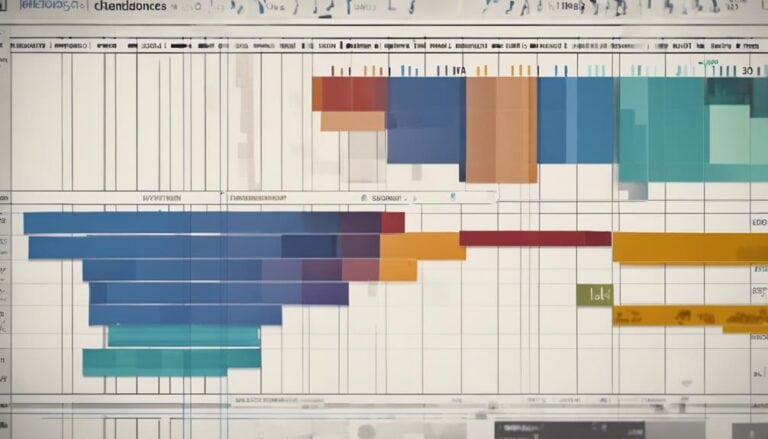When navigating the waters of project management, are you more inclined towards the structured, predictable flow of a waterfall or the adaptable, collaborative nature of genuine Scrum?
As you weigh the pros and cons of each approach, consider how your choice could influence the success of your upcoming projects.
The decision between these methodologies isn't just about following a prescribed path but rather about aligning your strategy with the unique demands of your project landscape.
Let's explore how these contrasting methodologies can impact your project outcomes.
Key Takeaways
- Waterfall suits well-defined projects with structured planning.
- Scrum adapts to dynamic environments with iterative development.
- Choose Waterfall for clear requirements, Scrum for evolving needs.
- Stakeholder involvement and adaptability are crucial for methodology selection.
Waterfall Methodology Overview
Exploring the Waterfall methodology reveals a structured, linear approach to project management, encompassing distinct stages for seamless progression. This linear process emphasizes upfront planning, ensuring clear stages from initiation to project closing. The sequential flow of Waterfall methodology dictates that each phase must be completed before moving on, providing a structured framework for project tracking and issue resolution.
In Waterfall, the focus lies on adhering to the predetermined plan, making it challenging to accommodate changing requirements. While progress tracking is straightforward, any alterations necessitate significant replanning, resulting in slow time-to-market and increased costs. This methodology is best suited for projects with well-defined requirements and minimal changes expected, where a structured and predictable approach is preferred over flexibility.
Scrum Methodology Explained
Pivoting from the structured and linear approach of the Waterfall methodology, let's now delve into the dynamic and iterative world of Scrum with its focus on delivering value through regular feedback and adaptation. In the Scrum methodology:
- Agile Framework: Scrum is an Agile framework that promotes adaptive planning, evolutionary development, early delivery, and continuous improvement.
- Iterative and Incremental: Scrum breaks the project into small iterations called Sprints, each delivering a potentially shippable product increment.
- Key Events and Artifacts: Scrum involves essential events like Sprint Planning, Daily Standups, Sprint Review, and Sprint Retrospective, fostering collaboration and transparency. Additionally, artifacts like the Product Backlog, Sprint Backlog, and Increment ensure visibility and progress tracking throughout the project.
Embrace the iterative nature of Scrum, where the Product Owner, Scrum Master, and Development Team work closely together to maximize value delivery. By engaging in Sprint cycles and embracing feedback loops, Scrum empowers teams to adapt and respond efficiently to changing requirements, ultimately driving successful project outcomes.
Key Differences Between Waterfall and Scrum
Comparing Waterfall and Scrum methodologies reveals distinct approaches to project management, highlighting their contrasting philosophies towards development processes. Waterfall follows a sequential structure where each phase, such as requirements gathering, design, development, and testing, is completed before moving on to the next. In contrast, Scrum, being Agile, focuses on an iterative approach, breaking the project into smaller segments called sprints, allowing for flexibility and continuous improvement.
Waterfall is best suited for projects with well-defined and unchanging requirements, as it requires detailed upfront planning and has limited room for adjustments once the project is underway. On the other hand, Scrum thrives in dynamic environments where requirements evolve, promoting adaptability, collaboration, and continuous feedback among cross-functional teams. While Waterfall emphasizes a structured and disciplined approach, Scrum values the ability to respond to change, deliver value quickly, and involve the team in decision-making processes. The choice between Waterfall and Scrum depends on the project's nature, requirements, and the level of flexibility and collaboration desired throughout the development process.
Choosing Between Waterfall and Scrum
To make an informed decision between Waterfall and Scrum for your project, consider the unique characteristics and requirements of each methodology.
- Adaptability: Waterfall is rigid and may struggle with changing requirements, while Scrum is flexible and embraces adaptation throughout the project.
- Collaboration: Waterfall relies on distinct phases with limited interaction, whereas Scrum emphasizes collaboration, communication, and teamwork among team members.
- Project Complexity: For straightforward projects with clear requirements, Waterfall might be suitable. In contrast, if your project involves uncertainties or evolving needs, Scrum could be a better fit.
Choosing between Waterfall and Scrum involves evaluating factors such as project complexity, stakeholder involvement, and the need for adaptability. If your project requires continuous feedback, collaboration, and the ability to adjust to changing requirements, Scrum might be the way to go. On the other hand, if your project has well-defined requirements and a linear structure works best, then Waterfall could be the more appropriate choice.
Finding the Right Fit for Your Project
For the best outcome in your project, consider the unique characteristics and requirements of both Waterfall and Genuine Scrum methodologies to find the right fit.
When comparing Scrum vs. Waterfall, remember that Waterfall's linear, sequential approach suits projects with well-defined requirements, while Genuine Scrum's agile development framework is best for dynamic environments requiring adaptability.
Waterfall emphasizes upfront planning and adherence to a predetermined scope, while Genuine Scrum focuses on iterative development, continuous feedback, and collaboration within cross-functional teams.
To decide between Waterfall vs. Genuine Scrum, assess your project's complexity, uncertainty, and the need for flexibility in adapting to evolving requirements. If your project demands a structured plan from the start and has clear, unchanging objectives, Waterfall may be the better choice.
Conversely, if your project is subject to frequent changes, requires iterative development, and benefits from cross-functional collaboration, Genuine Scrum could be more suitable. By aligning the development framework with your project requirements, you can optimize efficiency and effectiveness in delivering successful outcomes.
Frequently Asked Questions
What Is the Main Difference Between Scrum and Waterfall?
In an iterative approach like Scrum, flexibility is key, enabling collaboration, customer involvement, adaptable timelines, and continuous feedback. Waterfall's rigidity lacks these benefits, hindering risk management, team empowerment, transparency, and change management.
What Are 3 Main Differences Between Agile and Waterfall Methodologies?
In Agile, you embrace an iterative approach with flexible project phases, encouraging team collaboration and stakeholder involvement. Communication is informal, focusing on adaptability and continuous improvement. Unlike Waterfall, Agile excels in change and risk management.
Is There a Time When Waterfall Is Preferable Over Scrum?
When project constraints, client expectations, and team experience align with a well-defined scope, rigid deadlines, and limited changes, Waterfall may be preferable over Scrum. Consider time sensitivity, budget limitations, complexity, regulations, risk, stakeholder involvement, and organizational culture.
What Is the Difference Between Safe Agile and Waterfall?
In Agile frameworks like SAFe, the implementation process focuses on team collaboration, iterative development, and adaptability. Unlike Waterfall's linear project management, Agile promotes communication strategies, stakeholder involvement, and effective change management for better risk assessment.
Conclusion
As you weigh the options between Waterfall and Scrum, remember that the best plan is the one that fits your project like a glove.
Embrace the iterative nature of Scrum and the structured approach of Waterfall to find the perfect balance for your unique needs.
Keep exploring, keep adapting, and keep refining your methodology to ensure success in your project.
The journey may be challenging, but the destination will be worth it.





